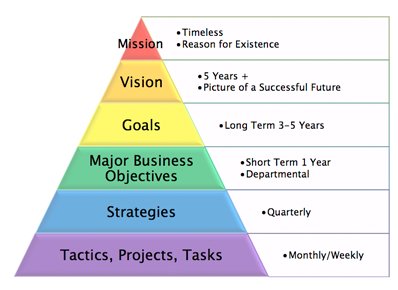 When I blogged about writing a Mission Statement two weeks ago, I said it would help focus you so at the end of next school year you would not feel overwhelmed, exhausted and unsure of what you had accomplished. If you took my advice and wrote one, along with a Vision Statement as I recommended last week, you can use them to chart your course for the coming year and take your program to the next level. Now is the perfect time for you to create a small strategic plan.
When I blogged about writing a Mission Statement two weeks ago, I said it would help focus you so at the end of next school year you would not feel overwhelmed, exhausted and unsure of what you had accomplished. If you took my advice and wrote one, along with a Vision Statement as I recommended last week, you can use them to chart your course for the coming year and take your program to the next level. Now is the perfect time for you to create a small strategic plan.
While organizations, corporations, and sometimes school districts bring together key members and a facilitator for one or more days to develop their strategic plan, you can do one on your own, although if you can get others to join you it’s likely to be even better. The reason why strategic planning is considered important is that you set a direction for the next three years, understanding where, why, and how to concentrate your efforts. Adjustments are made as you go along, and at the end of each year you can see how close you get to attaining your goals.
Speaking of goals—they are the first thing you need to write now that you have your Mission and Vision. What are two or three goals you would like to achieve over the next three years? Perhaps you want to develop stronger collaborations with teachers. Or maybe, you want to increase your student’s recreational reading. These goals are yours. They should further your Mission and/or Vision, and they should take time to accomplish.
Once you have your goals set, you are ready to determine how to realize them one year at a time. For each goal, determine one or more Action Plans. For example, if you want to develop stronger collaborations with teachers you might have an action plan to connect with three of them on an inquiry-based project, or zero in on a specific department or grade level. Choose carefully. Which are most likely to be open to your approach. If you want to increase recreational reading, what program would best fit your school to get interest started? One school, one book? Battle of the Books? A skyped author visit?
How will you accomplish each of your Action Plans? Set up a spread sheet with your Mission and Vision on top, and then the first goal. Identify the Action Plan(s) for the goal, and list who will be involved. Obviously you would, but who else? Which teachers? Will you need something from an administrator or the tech department? When will each piece begin and end?
Most important of all is a column for assessment. How will you evaluate each of the pieces? Note what worked and what didn’t. Perhaps a teacher you planned to work with had to leave mid-year. Things beyond your control always come up. Also you may have not factored in something important. Don’t despair. It’s all a learning experience. Congratulate yourself on the parts you got right. Even if you have only achieved one small step forward, at least you were able to move your program in a direction you set.
 Now you are ready for year two of your Strategic Plan. Your goals stay the same, but you need new Action Plans. Based on how your first year went, you have a better idea of what is possible. By the end of year three, your program will have moved forward appreciably, and you will have had a sense of accomplishment as each year draws to a close.
Now you are ready for year two of your Strategic Plan. Your goals stay the same, but you need new Action Plans. Based on how your first year went, you have a better idea of what is possible. By the end of year three, your program will have moved forward appreciably, and you will have had a sense of accomplishment as each year draws to a close.
Get started over the summer in developing your Strategic Plan. Schedule a visit with your principal or supervisor—they are much more accessible in summer—and share your plan. You might even get an early buy-in. v
